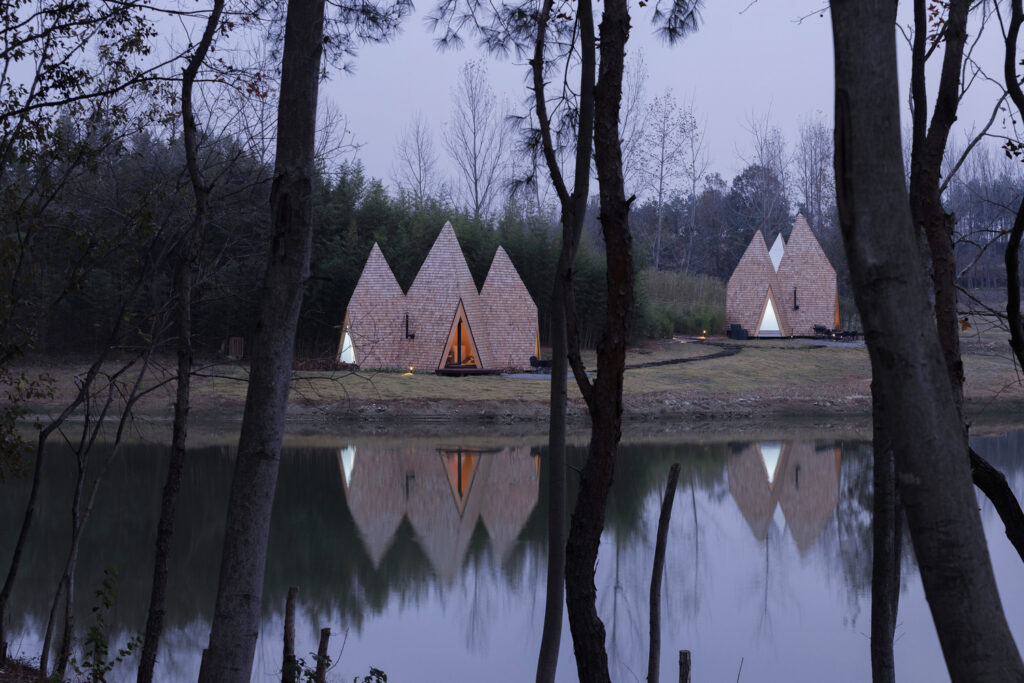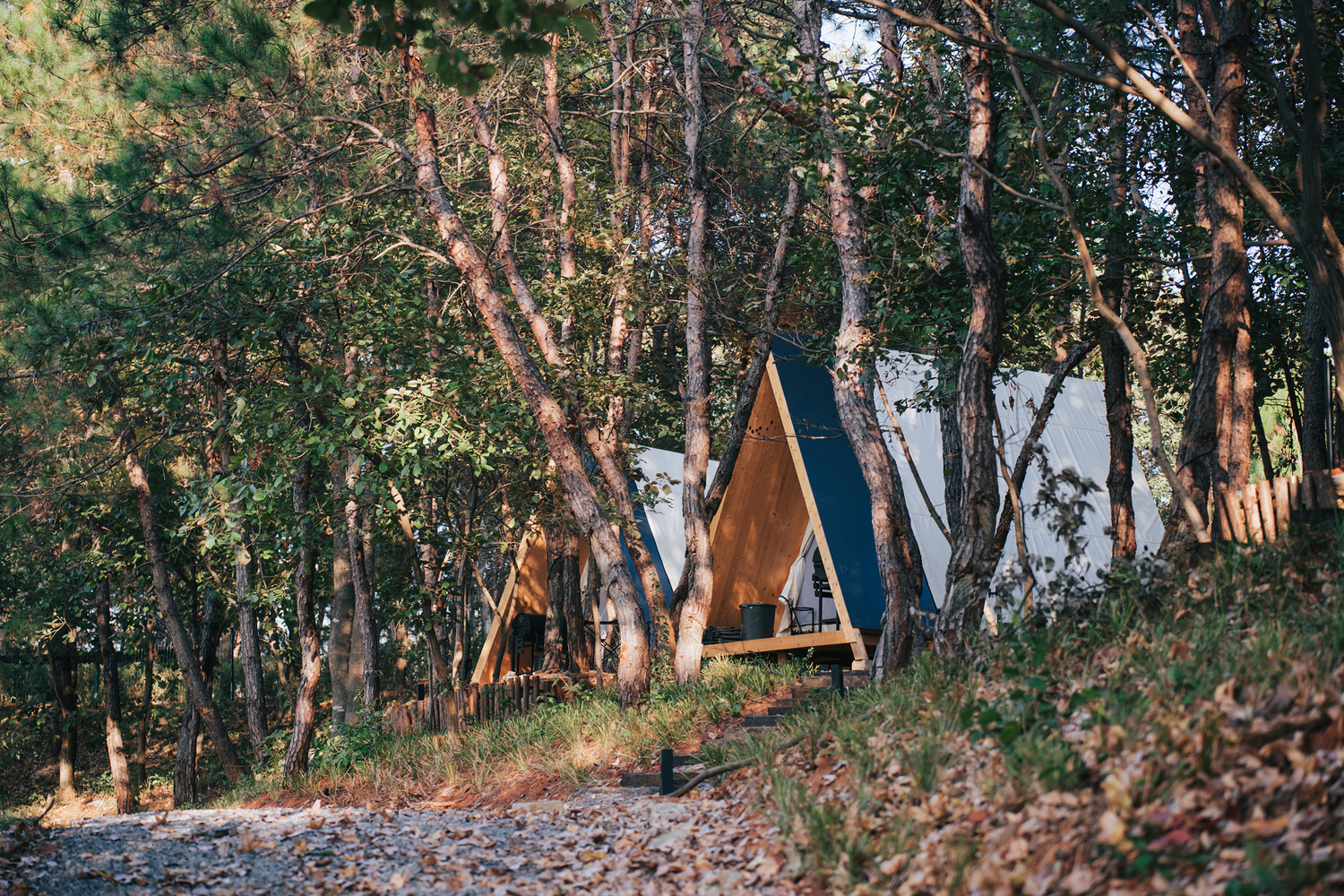An area of about 200 acres In Huanggang City, China, has 13 wooden houses scattered around. This project is part of the Wiki World Co-Building Plan that is building a series of unique natural homes in nature. They designed and built 6 different types of cabins, combining location selection and exploration of living possibilities. It depends on curiosity, the way you enter the site, and what you want to see when you lie down. These cabins are called: Dumbo, Obelisk, Pyramid, Giraffe, Sprite and Wiki Shelter.
 Dumbo has a huge black double-slope roof. The black carbonized wood loft space houses two comfortable large beds, and the first floor is a living room facing nature.
Dumbo has a huge black double-slope roof. The black carbonized wood loft space houses two comfortable large beds, and the first floor is a living room facing nature.
 Giraffe is a high wooden cabin with a slender facade that looks like a giraffe in nature. There are two independent bedrooms on the second and third floors. The bedroom on the third floor has an independent terrace, and you can reach out and touch the branches.
Giraffe is a high wooden cabin with a slender facade that looks like a giraffe in nature. There are two independent bedrooms on the second and third floors. The bedroom on the third floor has an independent terrace, and you can reach out and touch the branches.
 Pyramid has a huge pyramid-shaped roof which hides a comfortable attic bedroom and a huge terrace. If it’s windy or raining, under the eaves is the best place to hang out.
Pyramid has a huge pyramid-shaped roof which hides a comfortable attic bedroom and a huge terrace. If it’s windy or raining, under the eaves is the best place to hang out.
 Obelisk maintains a monumental shape. The second floor is a bedroom and the first floor is a bedroom with a huge bay window. The bathrooms are all indoors. Users say that lying in the attic and looking up at the spire, they always feel like they had to believe in something.
Obelisk maintains a monumental shape. The second floor is a bedroom and the first floor is a bedroom with a huge bay window. The bathrooms are all indoors. Users say that lying in the attic and looking up at the spire, they always feel like they had to believe in something.
 The Sprite cabin is a house designed for elves, has a crystal-like shape, and fish-scale tiles. This one is alone on its own peninsula, which is secluded enough to make people feel a little lonely.
The Sprite cabin is a house designed for elves, has a crystal-like shape, and fish-scale tiles. This one is alone on its own peninsula, which is secluded enough to make people feel a little lonely.
 Wiki Shelter provides the most basic shelter for humans in nature. The space is large, warm and comfortable enough, just like a hunter’s hut.
Wiki Shelter provides the most basic shelter for humans in nature. The space is large, warm and comfortable enough, just like a hunter’s hut.
 Wiki World retains every tree in the site, keeping the original woodland and farmland. All the cabins are prefabricated wooden structures.
Wiki World retains every tree in the site, keeping the original woodland and farmland. All the cabins are prefabricated wooden structures.
 These buildings can be built like Legos. The wild wood construction technique hand fires the façade of the carbonized wood boards. The cabins are all connected by small metal components that can be repeatedly assembled. Each wooden cabin is elevated above the ground.
These buildings can be built like Legos. The wild wood construction technique hand fires the façade of the carbonized wood boards. The cabins are all connected by small metal components that can be repeatedly assembled. Each wooden cabin is elevated above the ground.
You can read the original article at www.archdaily.com

